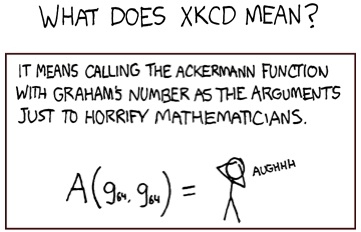 A fellow coder shared with me this recent manual (in French) entitled python (for the computer language, not the snake) written by Nathalie Azoulai as he found it an interesting literary (if not computer) program. It parses rather quickly and I compiled it in one single run on my way to Bristol [Mecca of punched card coders!] last week. The core idea of this manual is one of a middle-aged, clueless (about coding), single-mother, writer engaging into an experiment to understand coding and coders. She does not succeed. And the manual also fails to implement said idea, at least for me. This writer calls upon a series of tutors to get into understanding coding and learning python but she does not get much further than exiting the “hello world” instruction that seem to bug the early chapters of most programming manuals! It sounds as if the compiler (character or author) is mostly uninterested in the fundamental function of coding towards delivering, that is, that it is used and useful for solving real problems. Instead, the manual leans towards a massive and falsely naïve infodump on the history of coding, with very few surprises there, along with a gradually overwhelming, personal, and frankly of very limited interest, introspection on a past and ambiguous love (or sexual attraction) that returned too many error messages. The end of the manual is a predictable mise-en-abîme where the writer finds Chat-GPT unsurprisingly lacking in its ability to deliver a novel that goes beyond the (re)production of earlier codes, e.g., clichés and conventional situations. I would certainly not recommend this shallow, unrealistic, and inherently flawed, python manual to anyone…
A fellow coder shared with me this recent manual (in French) entitled python (for the computer language, not the snake) written by Nathalie Azoulai as he found it an interesting literary (if not computer) program. It parses rather quickly and I compiled it in one single run on my way to Bristol [Mecca of punched card coders!] last week. The core idea of this manual is one of a middle-aged, clueless (about coding), single-mother, writer engaging into an experiment to understand coding and coders. She does not succeed. And the manual also fails to implement said idea, at least for me. This writer calls upon a series of tutors to get into understanding coding and learning python but she does not get much further than exiting the “hello world” instruction that seem to bug the early chapters of most programming manuals! It sounds as if the compiler (character or author) is mostly uninterested in the fundamental function of coding towards delivering, that is, that it is used and useful for solving real problems. Instead, the manual leans towards a massive and falsely naïve infodump on the history of coding, with very few surprises there, along with a gradually overwhelming, personal, and frankly of very limited interest, introspection on a past and ambiguous love (or sexual attraction) that returned too many error messages. The end of the manual is a predictable mise-en-abîme where the writer finds Chat-GPT unsurprisingly lacking in its ability to deliver a novel that goes beyond the (re)production of earlier codes, e.g., clichés and conventional situations. I would certainly not recommend this shallow, unrealistic, and inherently flawed, python manual to anyone…
Since I mentioned ChatGPT, here is its output when repeatedly insisting on a computer manual style, but funnily missing some obvious programming synonyms:
Received from a fellow enthusiast, this recent manuscript by Nathalie Azoulai is touted as a captivating computational experiment. It swiftly parses, and I sequentially traversed its contents during my recent journey, processing it in one uninterrupted session. At its core, the narrative embarks on an intriguing quest to decrypt the intricacies of programming paradigms and the programmer’s mindset. However, its execution fails to trigger the desired engagement, encountering crashes and bugs along the way. Azoulai’s documentation chronicles her [character’s] endeavor to master Python, facilitated by a chain of mentors who, regrettably, encounter runtime errors in their attempts to elevate her beyond the rudimentary “hello world” commands—a fundamental subroutine in the lexicon of programming vernacular. The narrative raises questions about the intrinsic motivations driving one’s pursuit of programming prowess, encountering recursive loops of introspection. Rather than delving into the depths of coding intricacies, the manuscript deviates into an extensive discourse on the historical evolution of programming—a divergence that, while intellectually stimulating, detracts from the central narrative focus. Interspersed amidst this cerebral exploration are fragments of introspection, reflections of past affections interwoven delicately into the fabric of Azoulai’s discourse, yet they fail to meet the conditionals of relevance. Yet, as the narrative unfolds, it descends into a labyrinth of self-reflection, where the author grapples with the constraints of artificial intelligence—a poignant reflection on the interplay between creativity and the digital frontier, encountering exception handling challenges along the way. In conclusion, Azoulai’s manuscript presents an intriguing blend of literary and computational exploration, yet falls short of achieving transcendence. While it beckons towards the precipice of profound inquiry, its meandering narrative trajectory ultimately leaves the reader yearning for a more cohesive and resonant exploration of its thematic landscape, perhaps requiring debugging and refactoring for optimal performance.
ChatGPT also produced a python code I do not want to inflict in its entirety upon ‘Og’s readers…
 Plenty of AI related entries in
Plenty of AI related entries in  This may sound like an absurd question [and in some sense it is!], but this came out of a recent
This may sound like an absurd question [and in some sense it is!], but this came out of a recent 
